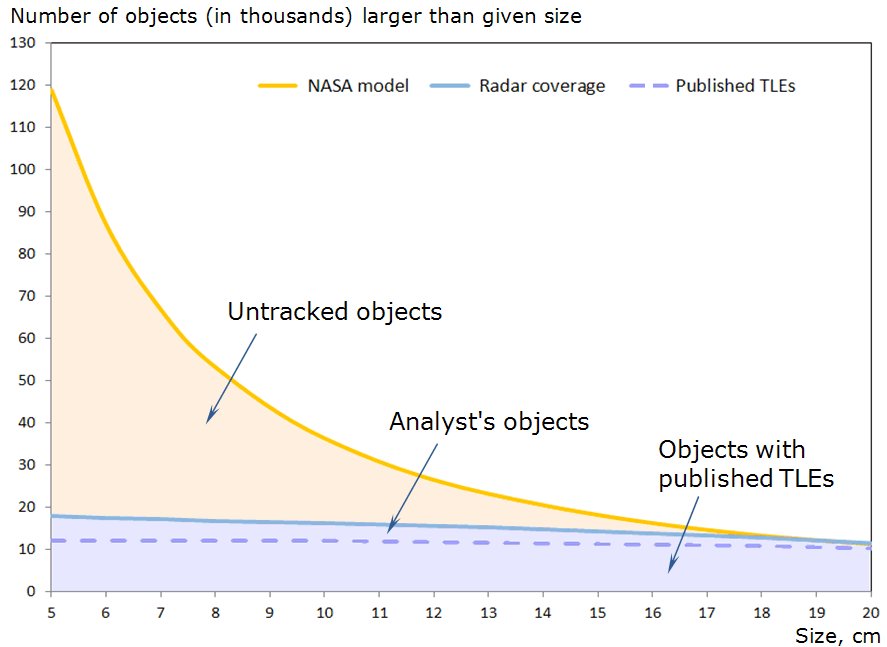Debris Observation
Debris objects in Earth orbits constitute 95% of the published catalog and are responsible for most conjunctions with operational satellites. It is recognized that the accuracy of published two-line element (TLE) data is not sufficient for conjunction analysis, and that much more precise data is needed to ensure the safety of spacecraft. National surveillance networks have more precise data on certain objects, but it is typically restricted and not readily available. It is also limited in scope because of limited coverage of particular networks.
A number of new tracking methods, technologies, and systems have been developed recently and more are in development. It has been shown that impressive accuracies can be achieved even with small telescopes, resulting in state vector estimations up to two orders of magnitude more accurate than derived from TLE data. Industry and academia have moved to explore this option and start deploying their own sensor networks.

- LEO Coverage from 30 Ground Sites Comparable to 5 UAVs or 1 Spacecraft
Tracking LEO debris appears most challenging because of its very large populations, high velocities, and limited viewing opportunities. Coverage depends on the network configuration and sensor capabilities. It turns out that one spacecraft or five UAVs could provide LEO debris coverage comparable to the coverage provided by a network of 30 ground sites. Specially designed optical instruments can provide high throughputs and accuracy in all configurations. Details were presented at the 2014 IAC (view PDF).
Besides tracked debris objects, there are many more debris fragments that remain undetected. It is essential that they are identified as they can potentially disable a spacecraft. Radars miss a substantial number of debris objects in the 10-15 cm range and a bevy of objects smaller than 10 cm. It is estimated that, in LEO, there are tens of thousands of untracked fragments in the 5-15 cm range that are generally/easily perceivable by small telescopes.

- Estimated Distribution of Untracked Debris Objects in LEO
A free market for high precision debris data could provide satellite operators with comprehensive and highly accurate datasets they need. There is no inherent reason why debris data obtained by commercial instruments outside national surveillance networks may need to be restricted, and all national space agencies will benefit from having such data. The debris threat is indiscriminate, and spacefaring nations can recognize neutrality and utility of the market solution and find a suitable form of its implementation. This will be a potent measure for debris threat mitigation.
 Electrodynamic Technologies
Electrodynamic Technologies